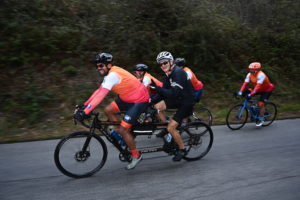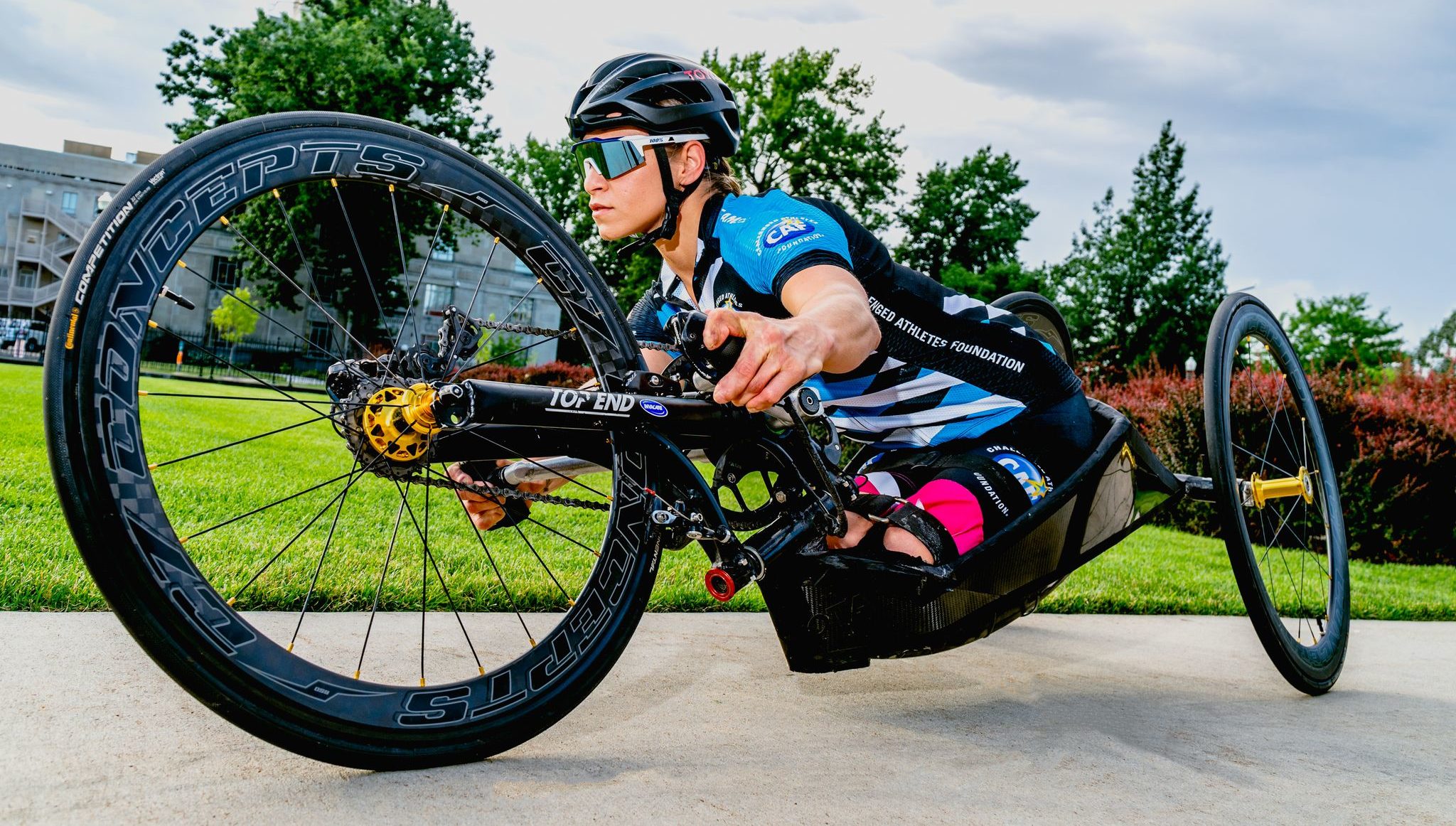Expanding Adaptive Cycling: CAF’s Developmental Racing Teams
Expanding Adaptive Cycling: CAF’s Developmental Racing Teams
In 2019, the Challenged Athletes Foundation (CAF) introduced the Developmental Racing Teams to promote adaptive cycling among athletes with physical disabilities. This initiative has elevated para-cycling standards with the teams collectively boasting six UCI World Champions, twelve National Champions, four Paralympic competitors, and six Paralympic medalists.
Elite Athletes Leading the Way
These teams feature outstanding athletes including Ryen Reed, Oksana Masters, Jenna Rollman, Alicia Dana, Gabby Platt, Danielle Watson, and Carlos Moleda (Coach) in handcycling and Jill Walsh, Mandy Kloepfer, Ellie Kennedy, Matthew Rodriguez, and Steven Peace (Coach) in trike racing.
Highlighting their competitive prowess, team members have excelled at prestigious events like the US Nationals of Paradise and the Tour of American Dairyland, where Gabby Platt, Ryen Reed, and Danielle Lancelot Doelling consistently secured top honors across various disciplines. Beyond their athletic achievements, these teams aim to inspire broader participation in cycling, emphasizing the transformative benefits of adaptive bikes like handcycles and trikes. By fostering independence and community engagement, they exemplify inclusivity, diversity, and dedication, paving the way for future generations of adaptive cyclists.
Raising Awareness and Inspiring Participation
The CAF Developmental Racing Teams are committed to raising awareness for their sport and introducing others to the world of cycling. They aim to inspire more people, both with and without physical disabilities, to take up cycling and experience the joy and freedom it offers. The Women’s Handcycle Team and the Trike team are prime examples of what can be achieved with determination, hard work, and the support of community.
Their success stories are a testament to the idea that with the right support and dedication, athletes with physical disabilities can achieve greatness and serve as role models for others.


Benefits of Adaptive Bikes
Adaptive bikes such as handcycles and trikes offer numerous benefits for people with physical disabilities. These bikes provide a means of physical exercise, promoting cardiovascular health and muscular strength. They also offer a sense of independence and freedom, allowing individuals to navigate various terrains and enjoy outdoor activities. Additionally, cycling can be a social activity, helping to build connections and community among riders.
The CAF Developmental Racing Teams, including both handcycle and trike athletes, demonstrate the potential of adaptive cycling. Their success and dedication inspire others to explore these adaptive bikes and experience the benefits they offer. By showcasing the achievements of these athletes, CAF promotes greater awareness and encourages more individuals to participate in cycling.
Types of Adaptive Bikes
Handcycles and trikes are specialized bikes designed to accommodate a wide range of abilities, offering people with disabilities an opportunity to engage in cycling. Here’s a look at some of the different types of handcycles and trikes available:
Recreational Handcycle A variety of handcycles are available that suit a wide range of abilities. This type of bike is propelled with force from arms through a crank system. The gears on handcycles are placed in the front of the bike as opposed to other types of bikes with the gears towards the back of the bike. Recreational handcycles are intended for riders who are interested in biking for fun on paved surfaces.


Off Road Handcycle: Off-road handcycles are designed to handle rough and uneven terrain, as they have wider and more durable tires. Electric off-road handcycles are another type that provides assistance with pedaling.
E-Assist Handcycle: E-Assist handcycles are adaptable and customizable to suit a wide range of abilities. These handcycles are available with hand pedals, foot pedals, and adaptive hand controls for those who have more limited arm movement.

The E-Assist handcycle shown in this image has a reverse braking system, quad grips, and SRAM wireless eTAP Shifting (shifts gears through the press of a button with a finger on each grip). Pressing the left button on the SRAM wireless eTAP Shifting moves the chain to the left to an easier gear, and pressing the right button moves the chain to the right to a harder gear. A power assist option is available if preferred.

Tandem Trike Bike: A variety of tandem trike bikes are available with differing seating options to suit an individual’s preference. This tandem trike bike has two semi-reclined seats to provide both riders with increased back support while riding.


Recumbent Delta Trike: This delta trike is one of many available products for recumbent bikes. The pedals are positioned in front of the rider with brake controls on each side of the seat.


Tandem Bicycle: A tandem bicycle or twin is a form of bicycle designed to be ridden by more than one person. In a tandem pair, the sighted cyclist steers from the front and the visually impaired cyclist provides extra power from the rear seat. This is a great way to make riding a team activity and more inclusive, the pedals spin together, so both riders enjoy the ride in tandem.